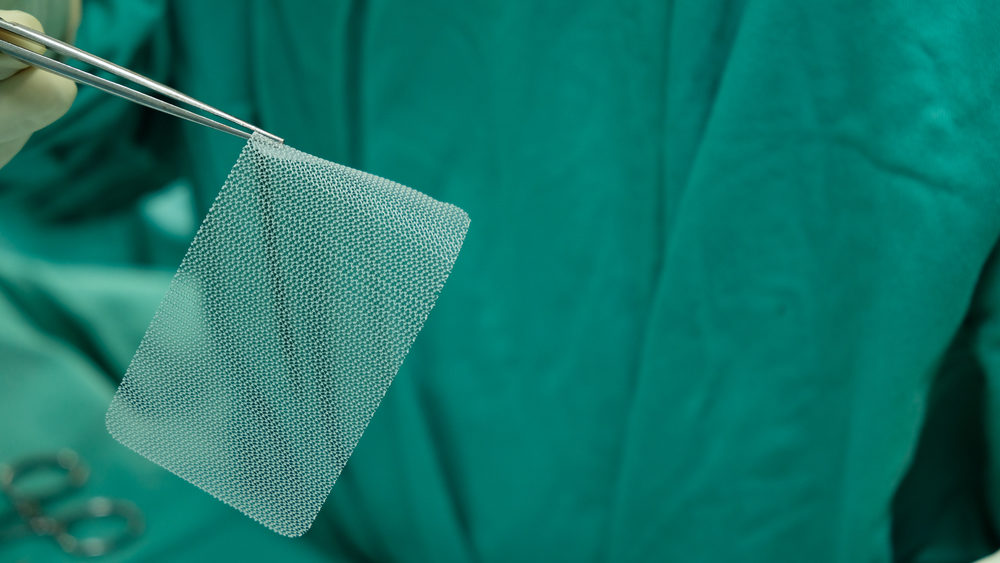Polypropylene Hernia Mesh Problems May Include Shrinkage and Alterations, Studies Have Shown

Amid a growing number of hernia mesh lawsuits filed in courts throughout the U.S. against various manufacturers, alleging that polypropylene patches used in recent years caused individuals to experience painful complications, doctors and health experts have been looking at why some products may be more likely to cause problems.
Last month, in the medical journal Membranes, researchers from Mexico and the U.S. conducted a review of the current status of surgical mesh science, looking at how the mesh has reacted with the human body for years.
The review notes surgical mesh products have been used since 1891. However, it also notes that they have always involved a risk of a large number of complications, including infections, fibrosis, adhesions, mesh rejection and the recurrence of hernias the mesh was designed to repair.

Learn More About
Cases reviewed for problems with several types of hernia repair products.
Learn More About this Lawsuit See If You Qualify For CompensationOne major concern that has come up repeatedly in lawsuits and studies is whether polypropylene, a material commonly used in hernia mesh, is compatible with the human body. To combat these concerns, some manufacturers have tried coating their mesh with a different substances, to varying success. The goal is to make the material as inert as possible, so that it is non-toxic to the human body, does not adhere to or perforate organs and don’t cause the body to activate an immune system response.
“Most surgical meshes used currently are chemically and physically inert, nontoxic, stable and non-immunogenic. However, none of them are biologically inert, a property related to the mesh physiology and its role into the hernia repair process,” the review study noted. “Implantation of any prosthetic material is quickly followed by an extraordinarily complex series of events that mark the initiation of the healing process.”
Concerns over polypropylene mesh problems date back years. One study, published in the European Journal of Surgery in 2011, warned that the products may have a tendency to shrink considerably when placed in the bodies of dogs.
The study found that meshes containing large amounts of polypropylene can shrink to 50% or even 30% of their original size. The researchers found that the less polypropylene a mesh contained, the less shrinkage occurred. It also found that mesh with larger pores were more likely to retain their shape.
Another study, published in the Journal of Urology in 2012, warned that while polypropylene may be considered inert before it goes into the body, that changes once it has been implanted.
“Many substances added to polypropylene for various purposes during manufacture behave as toxic substances that are released during the degradation process,” the researchers noted. “The material may also absorb various substances. These alterations in the chemical structure of polypropylene are responsible for visibly demonstrable fiber changes, resulting in the loss of structural integrity through material embrittlement.”
In 2013, during the discovery phase of the transvaginal mesh litigation involving surgical mesh products by C.R. Bard, records were uncovered which suggested that the manufacturer was warned that materials it wanted to use in its mesh products were not compatible with human physiology, but it went ahead and used them anyway.
The documents revealed that Bard’s Davol unit used plastic made by Chevron Phillips Chemical Co. However, the supplier of the plastic registered an official warning that the resin-based plastic was unfit to be implanted permanently in humans before Davol began using it.
Use of the plastic was discussed in e-mails from 2004 and 2007, which came to light as part of the discovery process during the litigation. In a March 2004 e-mail, Roger Darois, a Davol executive even indicated that the suppliers would be worried by the knowledge that the company was using their plastic for medical applications.
“It is likely they do not know of our implant application,” Darois, now a vice president at Bard, wrote. “Please do not mention Davol’s name in any discussion with these manufacturers.”
Lawsuits against a number of hernia mesh manufacturers often contain allegations that manufacturers are still using materials that are incompatible with the human body, but fail to adequately warn the medical community or patients of the potential risks.
“Despite reducing rates of recurrence, hernia repair with surgical meshes still faces adverse effects such as infection, adhesion, and bowel obstruction. Most of these drawbacks are related to the chemical and structural nature of the mesh itself,” researchers conducting the latest review noted. “A surgical mesh will trigger one of three different responses from the body: it may be integrated, encapsulated or degraded. In order to have a minimal inflammatory response to better integrate it to the body, it is highly important to improve biocompatibility.”
While that search continues, a growing number of product liability lawsuits continue to be filed against manufacturers of various different products introduced in recent years, which have since been found to be the cause of painful and debilitating injuries nationwide.
Most of the cases filed to date have involved Ethicon Physiomesh lawsuits and Atrium C-Qur mesh lawsuits. However, as lawyers continue to review and evaluate cases for individuals who experienced problems in recent years, additional allegedly defective products are being identified, and the scope of the hernia mesh litigation continues to widen.
Get more articles like this sent directly to your inbox.
"*" indicates required fields






0 Comments